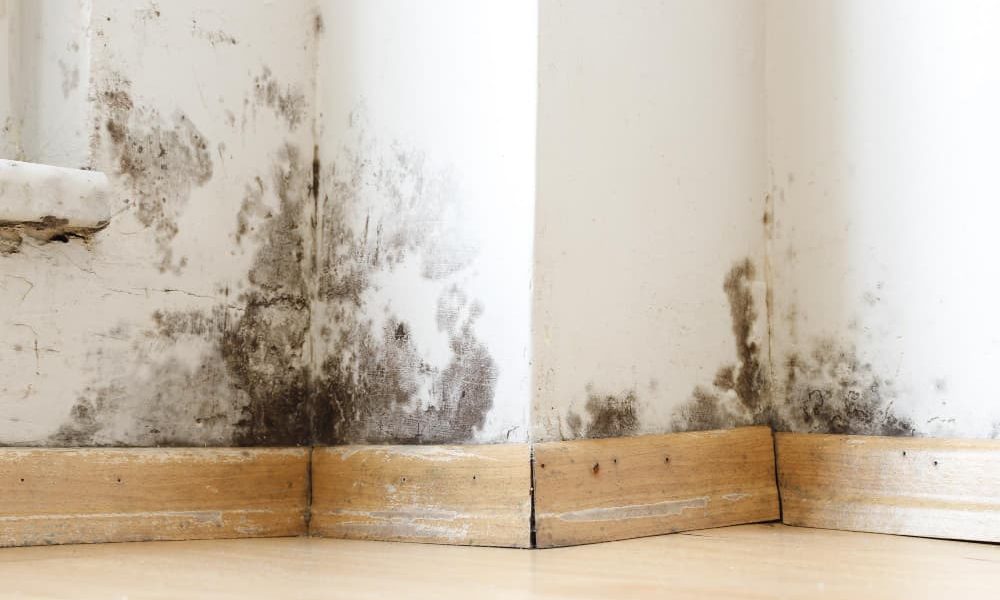Gardening has always been a soothing and rewarding hobby, but what if you’re short on space? That’s where vertical gardening comes in, offering a creative solution for those who want to grow plants but lack the room for traditional garden beds. One of the most popular and eco-friendly ways to create a vertical garden is by upcycling a wooden pallet. Not only does this approach help reduce waste, but it also transforms an everyday object into a stylish and functional space for growing plants.
Upcycling wooden pallets into vertical gardens has surged in popularity, especially for those who are passionate about sustainability and DIY projects. Pallets are easy to find, often free or low-cost, and can be transformed into a versatile growing structure with minimal effort. Whether you’re looking to grow herbs, flowers, or even vegetables, a pallet provides an excellent framework for your vertical garden.
In this step-by-step guide, we’ll walk you through the entire process—from selecting the right pallet and preparing it for planting, to choosing the best plants and maintaining your garden year-round. Whether you’re a seasoned gardener or a beginner, this guide will give you all the tools and tips you need to create a thriving vertical garden with minimal space and maximum impact. Let’s get started!
What You Need to Know Before Starting a Vertical Garden with Wooden Pallets
Creating a vertical garden from upcycled wooden pallets is a fantastic way to bring a touch of nature into even the smallest spaces. Whether you’re working with a compact balcony, a modest backyard, or simply want to add greenery to your home’s exterior, a wooden pallet offers the perfect foundation for a stylish and functional vertical garden.
Before diving into the process, there are several important factors to consider to ensure your project is safe, sustainable, and ultimately successful. In this guide, we’ll walk you through the essentials of preparing a pallet for upcycling, as well as the necessary tools and materials you’ll need to transform it into a thriving vertical garden.
Benefits of Upcycling Wooden Pallets for Gardening
Upcycling, or creatively reusing materials that would otherwise be discarded, offers a host of benefits. By repurposing a wooden pallet into a vertical garden, you’re not only reducing waste but also giving new life to something that might otherwise end up in a landfill. Moreover, wooden pallets are durable, affordable, and relatively easy to come by.
One of the standout advantages of using wooden pallets for gardening is their versatility. Pallets provide a pre-structured framework that can hold a variety of plants, from herbs and vegetables to ornamental flowers and succulents. Their vertical design allows for space-saving gardening, making them ideal for urban environments where ground space is limited. In addition, vertical gardens help with airflow between plants, reducing the risk of fungal diseases that can sometimes plague traditional garden beds.
Choosing the Right Pallet for Your Vertical Garden
Before you begin upcycling, it’s crucial to select the right type of pallet. Not all wooden pallets are created equal, and some may be unsuitable for use in a garden due to potential chemical treatments.
Start by looking for pallets that are marked with “HT” (heat-treated) stamps. These pallets have been treated using heat rather than chemicals, making them safer for use around plants and food crops. Avoid pallets that are marked with “MB,” which stands for methyl bromide, a toxic chemical that is used to treat some pallets. If the pallet has no markings at all, it’s best to err on the side of caution and choose a different one.
It’s also important to inspect the condition of the pallet. Look for one that is sturdy, with no visible signs of rot or excessive splintering. Minor imperfections can be fixed, but major damage may compromise the stability of your vertical garden over time. If possible, opt for a pallet made of hardwood like oak or maple, as these types are more resistant to moisture and decay.
Checking for Safety and Pallet Treatment
Once you’ve selected your pallet, it’s essential to ensure that it’s safe for upcycling. As previously mentioned, heat-treated pallets are your best bet, as they don’t contain harmful chemicals. However, even with an HT-marked pallet, you should give it a thorough cleaning before use.
Start by scrubbing the pallet with warm, soapy water to remove any dirt, debris, or potential contaminants. Rinse it thoroughly and let it dry completely before proceeding with any further preparation. You can also disinfect the pallet with a solution of vinegar and water, which will help kill any lingering bacteria or mold spores. This step is especially important if you plan on growing edible plants in your vertical garden.
How to Prepare a Wooden Pallet for Upcycling into a Garden
Now that you’ve chosen the perfect pallet, it’s time to prepare it for transformation. Proper preparation ensures that your vertical garden will not only look great but also withstand the elements and support the plants you intend to grow. In this section, we’ll guide you through cleaning, sanding, and treating your pallet for long-term success.
Cleaning and Sanding the Pallet: Step-by-Step Instructions
Before doing anything else, you’ll want to ensure that your pallet is clean and free of rough edges. As mentioned earlier, washing your pallet with soap and water is the first step. However, once it’s clean and dry, the next crucial task is sanding.
Sanding your pallet smooths out any splinters or rough surfaces that could cause injury or damage to your plants. Use medium-grit sandpaper (around 80-100 grit) for the initial sanding pass. This will help remove larger splinters and imperfections. Then, follow up with fine-grit sandpaper (150-180 grit) to smooth the surface even more, ensuring there are no sharp edges. Pay special attention to the top edges and corners where you’re most likely to come into contact with the pallet while planting or maintaining your garden.
If you plan on painting or staining your pallet, this is the best time to do it. A coat of weather-resistant paint or stain can enhance the look of your vertical garden while also protecting the wood from moisture and UV damage. Choose a non-toxic finish if you’re growing edible plants, and always allow the paint or stain to dry completely before continuing with your project.
Treating the Pallet to Withstand Weather Elements
Wooden pallets are not naturally resistant to the elements, so if your vertical garden will be outdoors, it’s crucial to take steps to protect the wood from rain, humidity, and sun exposure. One of the most effective ways to do this is by applying a wood preservative or waterproof sealant. This not only helps extend the life of the wood but also prevents the development of mold and mildew, which can be harmful to plants.
When choosing a sealant, look for one that is designed for outdoor use and is safe for use around plants. There are many eco-friendly options available that don’t contain harmful chemicals. Apply the sealant according to the manufacturer’s instructions, making sure to cover all exposed surfaces of the pallet. Once sealed, allow the pallet to dry thoroughly before moving on to the next steps in creating your vertical garden.
Waterproofing Techniques for Wooden Pallets
If you live in an area with heavy rainfall or plan on watering your plants frequently, adding an extra layer of waterproofing can be beneficial. One method is to line the inside of the pallet slats with landscaping fabric, which allows water to drain through while preventing soil from washing away. Alternatively, you can attach plastic sheeting to the back of the pallet to protect it from moisture while still allowing the front to hold your plants.
With your pallet cleaned, sanded, and treated, it’s now ready to be transformed into a vertical garden. The next steps will involve filling it with soil, planting your chosen greenery, and mounting it in your desired location. By taking the time to properly prepare your pallet, you’ll ensure that your garden thrives for seasons to come.
How to Choose the Best Plants for Your Wooden Pallet Vertical Garden
Now that your pallet is prepared and ready, the next step in upcycling it into a vertical garden is selecting the right plants. Not every plant will thrive in a vertical setup, so it’s crucial to make informed choices based on your climate, the amount of sunlight your garden receives, and the type of plants you want to grow. Whether you’re looking to cultivate a lush herb garden, a vibrant display of flowers, or even some fresh vegetables, choosing the right plants is key to success.
Selecting Plants Based on Your Climate and Sunlight Conditions
The most important factor when choosing plants for your vertical garden is to understand the environment where your garden will live. Is the space sunny, partially shaded, or fully shaded? Most plants have specific light requirements, and failing to match plants to the available sunlight can lead to poor growth or even plant death.
If your garden is in a sunny location, consider plants that thrive in full sunlight, such as herbs (basil, rosemary, thyme), flowers (marigolds, petunias, lavender), or vegetables like tomatoes and peppers. For gardens that receive partial sunlight or are in a more shaded area, opt for plants like spinach, lettuce, ferns, or mint, which can tolerate lower light levels.
It’s also worth considering the climate in your region. If you live in a cooler area, plants that thrive in moderate temperatures, like spinach and kale, are ideal. In hotter climates, look for drought-tolerant plants such as succulents, which are perfect for vertical gardening.
Best Herbs and Vegetables for Vertical Gardens
One of the joys of having a vertical garden is the ability to grow fresh herbs and vegetables right at your fingertips. Not only does this make cooking more convenient, but it also ensures that you always have fresh, organic produce on hand.
Herbs are some of the easiest and most rewarding plants to grow in a vertical garden. Varieties such as thyme, oregano, parsley, and basil do well in small spaces and can be grown in the narrow gaps between pallet slats. Additionally, herbs like rosemary and mint can quickly fill out vertical spaces, adding fragrance and greenery to your garden.
If you’re aiming to grow vegetables, choose smaller plants that won’t overwhelm the structure of your pallet. Lettuce, spinach, and strawberries are excellent options for vertical gardening, as their shallow root systems fit well in the compact pockets of a pallet garden. Climbing plants like peas or small tomatoes can also thrive in vertical gardens, with the pallet serving as a natural support system.
Companion Planting Techniques in a Pallet Garden
Another important consideration when selecting plants is companion planting, a technique in which different types of plants are paired together for mutual benefit. Companion planting can improve plant health, deter pests, and maximize space in a vertical garden.
For instance, planting basil near tomatoes is a well-known companion planting combination that benefits both plants. Basil helps deter harmful insects, while the tomatoes provide shade to protect the delicate basil leaves. Similarly, marigolds can be planted alongside vegetables, as their scent helps repel pests like aphids and beetles.
Using companion planting strategies can help your vertical garden flourish without the need for chemical pesticides or fertilizers.
Step-by-Step Guide to Building a Vertical Garden from Wooden Pallets
Now that you have selected your plants, it’s time to move on to the exciting part—building your vertical garden. This section will walk you through the process, from gathering materials to assembling the pallet into a functional garden. By following these steps, you’ll have a beautiful vertical garden ready to showcase your plants in no time.
Tools and Materials You’ll Need
Before you begin construction, gather all the necessary tools and materials to make the process smooth and efficient. Here’s a list of what you’ll need:
- A wooden pallet (prepared as discussed in Section 2)
- Landscape fabric or plastic sheeting
- Potting soil or a vertical garden-friendly soil mix
- Staple gun and staples
- Gardening gloves
- Scissors
- Small potted plants or seeds
- A drill and screws (optional, for mounting)
Once you have all your materials ready, it’s time to start building.
Creating Pockets or Tiers in the Pallet
One of the key steps in transforming your pallet into a vertical garden is creating pockets or tiers for your plants. The slats in the pallet serve as natural compartments, but they need to be lined with landscape fabric or plastic sheeting to hold the soil and plants.
Start by cutting pieces of landscape fabric or plastic to fit inside the back and sides of each slat on the pallet. The fabric will act as a barrier to keep soil from falling through while still allowing for drainage. Use a staple gun to secure the fabric in place, making sure it’s tight and secure. Repeat this process for each slat that will house plants.
Once your pockets are lined, fill each section with a nutrient-rich potting soil. Be careful not to overfill the pockets, as the soil will settle once you water the garden.
How to Secure the Pallet to a Wall or Fence
Once your pallet garden is assembled, the final step is deciding where and how to mount it. Vertical gardens need proper support, especially when filled with soil and plants, which can become heavy. Depending on where you want to place the pallet, you have a few options for securing it.
If you plan to lean the pallet against a wall or fence, make sure it’s in a stable position that won’t tip over. For more security, use a drill and screws to attach the pallet directly to the wall or fence. If mounting on a wall, ensure the surface can support the weight and use wall anchors if needed.
Alternatively, you can attach the pallet to a sturdy fence or outdoor post using zip ties or heavy-duty wire. If you want a free-standing vertical garden, you may consider building a frame around the pallet to provide additional stability.
How to Fill Your Wooden Pallet Vertical Garden with Soil
Now that your pallet is mounted, it’s time to prepare it for planting by adding soil. Filling your pallet garden with the right soil mix is crucial to providing your plants with the nutrients and drainage they need to thrive.
Choosing the Right Soil for Vertical Gardening
Vertical gardens have different requirements than traditional gardens, so it’s important to choose the right soil. A lightweight, well-draining potting mix is ideal for vertical gardening. This type of soil provides plenty of aeration and drainage, helping prevent waterlogging, which can lead to root rot.
You can also create your own mix by combining garden soil with perlite, peat moss, and compost. This blend will retain moisture while also ensuring the soil doesn’t become too dense, allowing plant roots to spread easily.
How Much Soil to Use Per Section of the Pallet
Each pocket in your pallet garden will need to be filled with soil, but be careful not to overfill. Start by adding a layer of soil to the bottom of each pocket, then gently pack it down. Continue adding soil until each pocket is about three-quarters full, leaving room for the plants.
Once your plants are in place, add a thin layer of soil on top to cover the roots, but avoid packing the soil too tightly as this can restrict root growth.
Tips to Ensure Proper Drainage in Your Vertical Garden
Proper drainage is essential in any garden, but it’s particularly important in vertical gardens to prevent water from pooling and causing root rot. Ensure that the fabric or plastic lining in your pallet pockets has small holes at the bottom to allow excess water to drain out.
You can also add a layer of small pebbles or perlite at the bottom of each pocket before adding soil, which will help improve drainage.
How to Properly Water a Wooden Pallet Vertical Garden
Watering is one of the most crucial aspects of maintaining a vertical garden. Due to the compact nature of the wooden pallet design, plants can quickly dry out or become waterlogged, depending on your watering habits. In this section, we’ll cover the best methods for keeping your plants properly hydrated, ensuring they stay healthy and vibrant.
Best Watering Techniques for Pallet Gardens
Vertical gardens have unique watering needs because water naturally flows downward, which means the plants at the top may dry out faster than those at the bottom. To manage this, you can use a top-down watering method, where you water from the highest row of plants and let gravity carry moisture to the lower rows. This allows the water to naturally disperse throughout the pallet, but be sure to check that each section is receiving enough water.
Another technique is to water each pocket individually. While more time-consuming, it ensures that every plant gets the right amount of moisture. Use a watering can with a long, narrow spout to reach into the pockets, avoiding overwatering the lower plants.
A soaker hose or drip irrigation system is also a great option for keeping your vertical garden evenly watered. These systems deliver slow, steady moisture to the plants, preventing both overwatering and drying out.
How to Install a Drip Irrigation System
If you want to make watering easier and more efficient, consider installing a drip irrigation system. This method provides consistent, controlled watering that keeps plants well-hydrated without wasting water.
To install a drip irrigation system in your pallet garden, you’ll need:
- Drip tubing or soaker hose
- Emitters (small devices that control water flow to individual plants)
- Hose connectors or adaptors
- Timer (optional but recommended)
Start by attaching the drip tubing along the length of the pallet, threading it through the plant pockets. Place an emitter near the base of each plant to deliver water directly to the roots. Connect the tubing to a water source, and use a timer to control how often and how long the system runs. Set it for shorter, more frequent intervals to avoid water runoff and to keep the soil moist.
This method not only reduces the amount of manual labor but also ensures that your vertical garden receives even, steady hydration, which is especially important during hot weather.
Signs of Overwatering and Underwatering in Vertical Gardens
Overwatering and underwatering are common issues in vertical gardens. Overwatering can lead to root rot and mold, while underwatering can cause plants to wilt or die.
To check if your garden is being overwatered, look for yellowing leaves, soggy soil, or mold growth. If these signs are present, cut back on your watering frequency or ensure that your drainage system is functioning correctly.
On the other hand, signs of underwatering include dry, brittle leaves, and soil that feels dry to the touch. If this occurs, increase your watering schedule or install a drip irrigation system to provide more consistent moisture.
Maintaining Your Wooden Pallet Vertical Garden Year-Round
Once your vertical garden is up and running, regular maintenance is essential to keep it thriving throughout the year. Different seasons present different challenges, so knowing how to care for your garden during each stage of the year will ensure its longevity.
Seasonal Care Tips for Pallet Gardens
Spring and summer are typically the most active growing seasons, requiring more attention to watering, pruning, and fertilizing. During these months, monitor your plants for signs of overgrowth and trim back any excess leaves to promote airflow and healthy growth. Regularly check the soil moisture and adjust your watering schedule based on weather conditions.
In fall, as temperatures begin to drop, reduce watering frequency and start preparing your plants for the colder months. Depending on your climate, some plants may need to be moved indoors or covered with frost blankets. You can also plant hardier crops like kale or spinach, which can withstand cooler weather.
In winter, many plants go dormant, requiring minimal care. If your vertical garden is outdoors, ensure that it’s protected from harsh weather conditions like frost, wind, and snow. Consider moving the garden to a sheltered location or using a weatherproof cover to shield it from the elements. For indoor gardens, reduce watering and avoid fertilizing, as most plants require less attention during the dormant period.
Protecting Plants During Extreme Weather
Extreme weather, whether it’s excessive heat, frost, or heavy rainfall, can severely impact the health of your vertical garden. During periods of extreme heat, ensure that your plants are getting enough water and consider moving the garden into partial shade to prevent sunscald. You can also install shade cloth to block some of the sun’s harsh rays.
In cases of heavy rain, check that your garden has adequate drainage to avoid waterlogging the soil. If your plants are receiving too much water, either reduce the frequency of watering or temporarily cover the garden to protect it from excess rainfall.
For cold weather, especially frost, it’s important to shield your plants with a frost blanket or move your vertical garden to a more sheltered location. If you’re growing frost-sensitive plants, consider bringing them indoors or covering the pallet with clear plastic to create a makeshift greenhouse effect.
Fertilizing and Pest Control in Vertical Gardens
Fertilizing your plants ensures they receive the nutrients they need to thrive. Use organic compost or a balanced liquid fertilizer every few weeks during the growing season to provide the necessary nutrients for growth. Be mindful not to over-fertilize, as this can lead to nutrient burn and harm your plants.
Pest control is another critical aspect of maintaining a healthy vertical garden. Common pests, such as aphids, caterpillars, and spider mites, can damage plants if left unchecked. To keep pests at bay, regularly inspect your plants for signs of infestation and use organic pest control methods like neem oil, insecticidal soap, or companion planting.
For example, planting marigolds alongside your vegetables can help deter harmful insects. Ladybugs are also excellent natural predators of aphids and can help keep your garden pest-free.
Creative Design Ideas for Wooden Pallet Vertical Gardens
While the primary purpose of a vertical garden is to grow plants, there’s no reason why it can’t also be a visually striking part of your home decor. With a little creativity, you can transform your pallet garden into an artistic focal point that enhances your living space.
Incorporating Paint and Decorations into Your Pallet Garden
One way to elevate the appearance of your vertical garden is by adding color and decorations to the wooden pallet itself. Painting the pallet in vibrant shades, such as teal, mustard yellow, or soft pastels, can give it a modern, cheerful look that complements your plants. Alternatively, you can use a wood stain to highlight the natural grain and give the pallet a rustic, earthy aesthetic.
You can also decorate the pallet with stenciled patterns, quotes, or small decorative items like hanging lanterns or fairy lights. These personal touches will make your vertical garden a unique feature that reflects your style.
Hanging Additional Planters or Accessories
One of the best things about a vertical garden is its versatility. You can add more than just plants to your pallet by incorporating additional planters, hooks, or accessories. For example, small terracotta pots can be attached to the slats for extra planting space, while hooks can hold gardening tools or decorative items.
Hanging accessories like wind chimes, small mirrors, or solar-powered lights can also add an artistic element to your garden while serving functional purposes. The key is to balance aesthetics with practicality, ensuring that your garden remains both beautiful and easy to maintain.
Using Reclaimed Materials to Enhance Your Vertical Garden Design
Since upcycling is at the heart of this project, consider enhancing your garden with other reclaimed or recycled materials. For example, old jars, tin cans, or vintage bottles can be repurposed as unique plant containers. These materials add character to your garden and align with the sustainable ethos of upcycling.
You could also use reclaimed wood or metal to build a custom frame around your pallet, giving it more structure and creating a cleaner look. Reusing materials in creative ways not only helps the environment but also gives your vertical garden a one-of-a-kind charm.
Troubleshooting Common Issues with Wooden Pallet Vertical Gardens
As with any gardening project, you may encounter challenges when maintaining your vertical garden. The good news is that most common issues can be easily addressed with the right knowledge. In this section, we’ll explore some of the most frequent problems faced by gardeners and how to troubleshoot them effectively.
How to Deal with Pests in a Pallet Garden
Pests can be a major problem for any garden, and vertical gardens are no exception. Common garden pests like aphids, snails, and caterpillars may invade your pallet garden, feeding on leaves, stems, and roots.
To combat pests naturally, start by introducing beneficial insects like ladybugs, which are excellent at controlling aphids. Additionally, you can spray your plants with a diluted solution of neem oil or insecticidal soap, both of which are effective and eco-friendly.
For slug and snail issues, try scattering diatomaceous earth around the base of your pallet garden or using copper tape, which naturally repels these pests. Regularly inspecting your plants for signs of infestation can help you catch problems early before they become severe.
Addressing Wood Rot and Mold Issues
Because wooden pallets are exposed to the elements in outdoor gardens, they are susceptible to moisture buildup, which can lead to wood rot and mold. If you notice your pallet starting to decay or spot mold growth, it’s important to act quickly to prevent further damage.
First, check your garden’s drainage. Ensure that water isn’t pooling around the base of the pallet or saturating the wood. You can also improve airflow around your pallet by positioning it in a spot where it can dry out between waterings. If the mold is minor, you can clean the affected area with a mixture of vinegar and water, which will kill the mold spores.
If parts of the pallet have become severely rotted, you may need to replace sections of wood. However, with proper care and regular maintenance, you can prevent wood rot from occurring in the first place.
Reviving Wilting Plants in a Vertical Garden Setup
Wilting plants are a sign that something is wrong, and the most common culprits are improper watering, poor soil conditions, or too much direct sunlight. If you notice your plants starting to droop, start by checking the moisture level of the soil. Overwatering or underwatering can both lead to wilting, so adjust your watering schedule as necessary.
If water doesn’t seem to be the issue, the problem could be related to sunlight. Make sure that each plant is receiving the right amount of light for its specific needs. Plants that are getting too much sun may benefit from being relocated to a partially shaded area.
Finally, check the soil for signs of nutrient depletion. Adding compost or a balanced fertilizer can provide a much-needed boost to struggling plants, helping them recover and thrive.
FAQs About Upcycling Wooden Pallets into Vertical Gardens
As you embark on your vertical gardening journey, you may have some common questions about the process. Here are answers to a few frequently asked questions to help guide you along the way.
How long do wooden pallet vertical gardens last?
The lifespan of your wooden pallet garden depends largely on the quality of the pallet and how well it’s maintained. With proper treatment, sealing, and care, a wooden pallet vertical garden can last anywhere from three to five years, or even longer if it’s sheltered from harsh weather conditions. Regularly treating the wood and ensuring good drainage will extend its life.
Can I use untreated wood for a vertical garden?
It’s generally not recommended to use untreated wood for a vertical garden, especially if the pallet will be exposed to outdoor elements like rain and humidity. Untreated wood is more prone to rot and insect infestation. If you have an untreated pallet, applying a protective sealant before planting will help increase its durability.
How do I move a wooden pallet garden if needed?
If you need to move your vertical garden, it’s best to do so when the soil is dry to avoid excess weight and soil spillage. Lean the pallet against a solid surface to avoid tipping, and enlist the help of a friend if the garden is particularly heavy. If the garden is securely mounted, carefully unscrew it from the wall or fence before transporting it to its new location.
Conclusion
Upcycling a wooden pallet into a vertical garden is a rewarding and environmentally friendly project that allows you to make the most of your space while enjoying the benefits of fresh greenery. From selecting the right pallet and plants to maintaining your garden year-round, each step brings you closer to creating a thriving vertical garden that not only looks beautiful but also serves a practical purpose.
By following the steps outlined in this guide, you’ll be well on your way to enjoying your own DIY vertical garden, whether you’re growing fresh herbs, vegetables, or ornamental plants. With the added benefits of sustainability and creativity, this project proves that gardening can be accessible and adaptable to any space. So grab your tools, start gathering plants, and get ready to transform your wooden pallet into a lush, vertical oasis.







